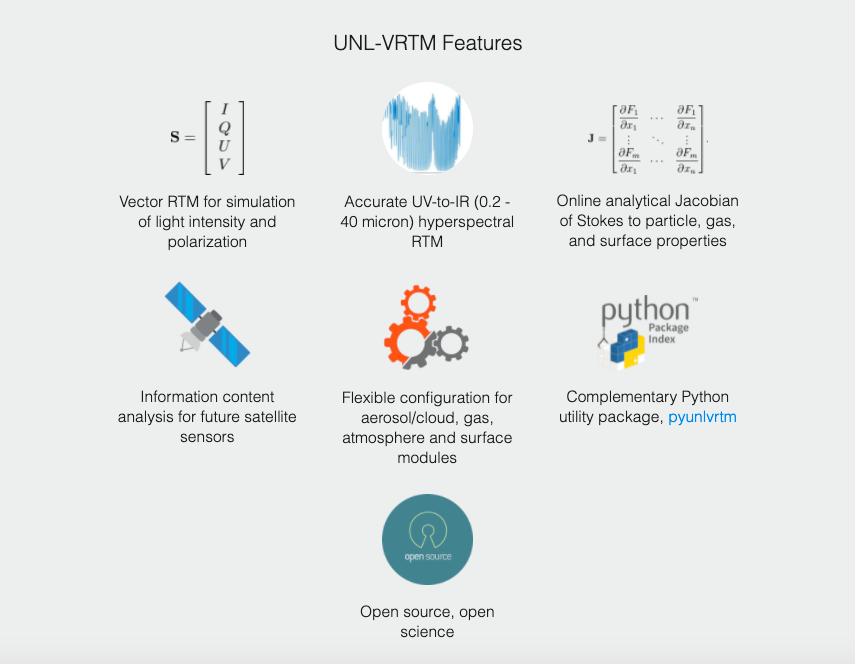The Unified Linearized Vector Radiative Transfer Model (UNL-VRTM) is a highly specialized, open-source computer program that simulates atmospheric remote sensing observations. The technology was developed in part by Jun Wang, Lichtenberger Family Chair in Chemical and Biochemical Engineering and director of the Atmospheric and Environmental Research Lab.
How it Works
The UNL-VRTM simulates the reflection of the Sun off the Earth's surface, back to the atmosphere where satellites orbit. The program features configurations for aerosol, cloud, gas, atmosphere, and surface modules, helping users understand what sorts of information can be retrieved relative to the design of a satellite.
The AER team uses UNL-VRTM to evaluate the information content of remote sensing measurements in both shortwave and longwave spectral wavelengths for retrieving aerosols, clouds, fires, and surface properties, from which we use the model to develop algorithms for retrieving loadings and optical properties of aerosols and clouds. Research interests involve remote sensing techniques with hyperspectral, multi-angle polarimetric, and night-time measurements. AER supports the development of the UNL-VRTM model for the general benefit of its user community.

